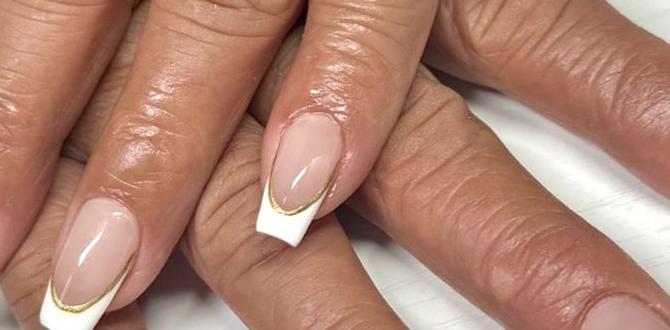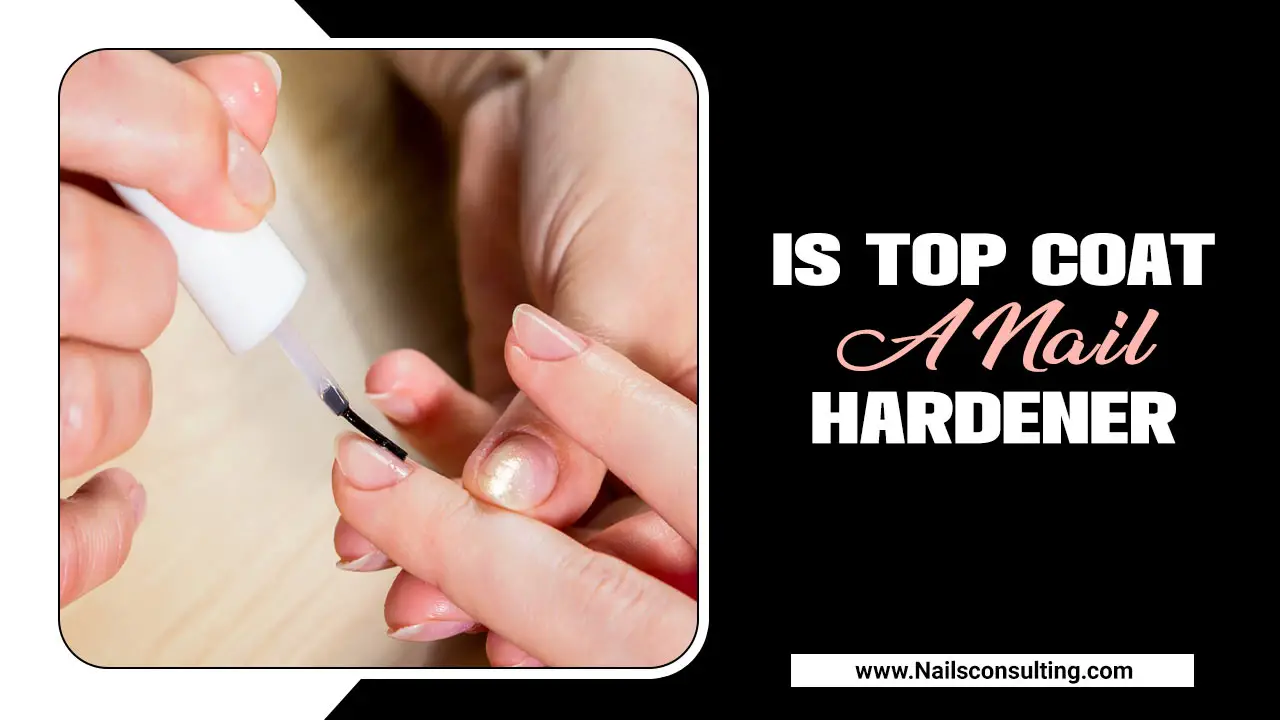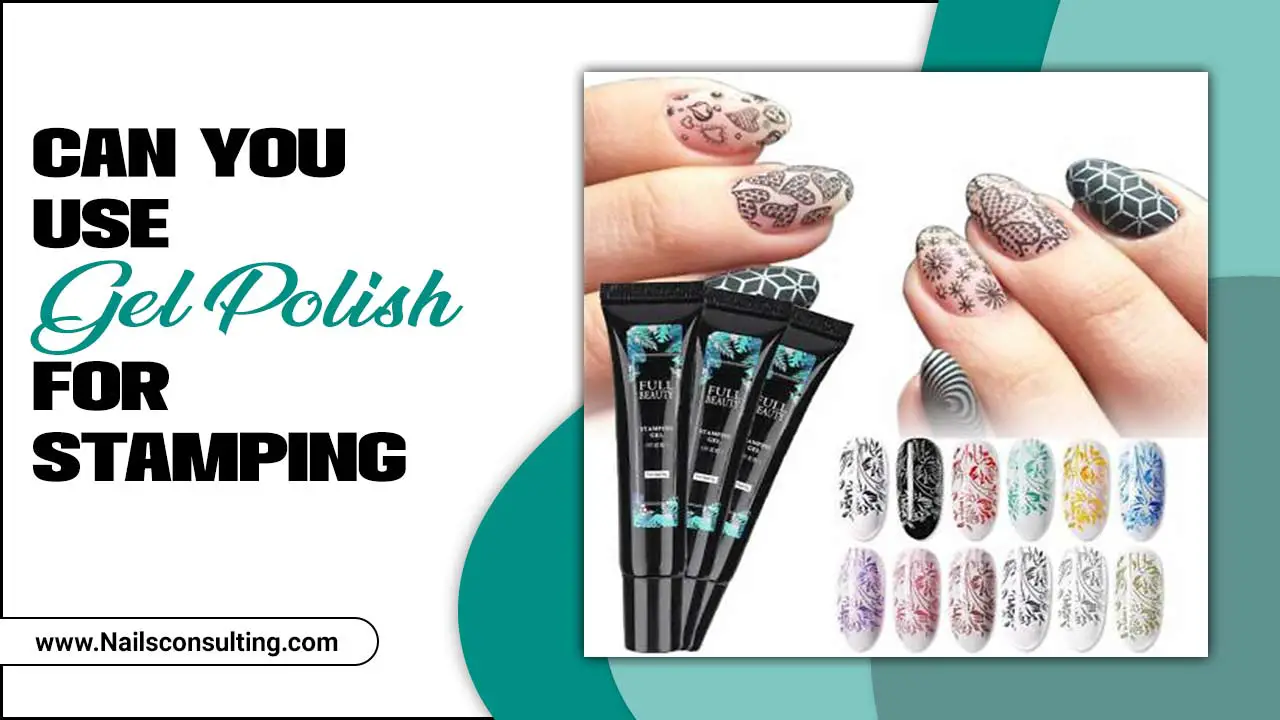Mastering your DIY manicures means prioritizing nail hygiene and safety. Clean tools, proper sanitization, and gentle techniques prevent infections and keep your nails healthy and beautiful. Follow these essential tips for salon-worthy results at home, safely and effectively.
Ever spent time perfecting a gorgeous DIY manicure, only to notice a bit of redness or irritation later? Or maybe you’ve wondered if those shared nail files are really okay. It’s totally normal to feel a little unsure about keeping your nails and tools clean when you’re doing your own mani at home. But don’t worry! Looking after your nails means keeping them healthy and happy, and it’s simpler than you might think. We’re going to walk through all the easy steps to ensure your at-home nail care is as safe and hygienic as it is beautiful. Get ready to feel confident about your nail game!
Why Nail Hygiene and Safety Matter for Your DIY Manicures
Think of your nails and the tools you use as tiny canvases for creativity! Just like any art project, these canvases need a clean and healthy environment to look their best. When we talk about nail hygiene and safety for DIY manicures, we’re really talking about protecting ourselves from little critters like bacteria and fungi that can cause infections. You know, those itchy, red, or even painful issues that can put a real damper on your fabulous nail art!
Improper hygiene can lead to more than just temporary discomfort. Things like under-the-nail infections, hangnail irritation, or even more serious issues can arise if we’re not careful. Plus, sharing unsanitized tools can spread germs. But here’s the best part: with a few simple habits, you can avoid all of that! We’re going to dive into how to keep everything sparkling clean so you can enjoy beautiful, healthy nails without any worries.
This guide is packed with easy-to-follow tips, from picking the right tools to cleaning them like a pro. We’ll cover what you need to know to make sure your DIY manicures are always a safe and enjoyable experience.
Essential Tools for a Safe DIY Manicure
Getting your DIY manicure set up for success starts with having the right gear. And when we say “right gear,” we mean tools that are not only effective but also easy to keep clean. Some tools are non-negotiable for a healthy mani, while others can be personal but still need a good scrub!
Here’s a breakdown of essential tools to have on hand and how they contribute to good nail hygiene and safety:
- Nail Clippers: For shaping and shortening nails. Metal clippers are durable and easy to sanitize.
- Nail File: To smooth rough edges and shape nails. Glass or metal files are excellent choices because they are non-porous and can be washed and disinfected thoroughly. Avoid porous emery boards if you plan to share or if you’re prone to infections, as they can harbor bacteria.
- Cuticle Pusher: A metal or wooden stick to gently push back the cuticle. Metal is best for sanitization.
- Cuticle Nippers: For carefully trimming hangnails or excess cuticle. Again, metal is ideal for hygiene.
- Buffer Block: To smooth the nail surface. Foam buffers are common, but ensure they are clean and replaced regularly if they become too worn or dirty.
- Orange Wood Sticks: Great for cleaning under the nail and pushing cuticles. While often disposable, they should be used gently and ideally discarded after one use per person to prevent cross-contamination.
- Base Coat, Top Coat, and Polish: Non-negotiable for a polished look and can offer a layer of protection.
- Nail Polish Remover: Acetone-based or non-acetone removers are crucial for a clean slate.
- Cotton Pads or Balls: For applying remover and cleaning up polish mistakes.
Having a dedicated set of tools for yourself significantly reduces the risk of spreading germs. If you do need to share, thorough cleaning and sanitization between uses are absolutely critical. We’ll delve into sanitizing techniques shortly!
Step-by-Step: The Hygienic DIY Manicure Process
Ready to give your nails some TLC? Let’s walk through a simple, safe DIY manicure routine. It’s all about gentle steps and keeping things clean!
Step 1: Wash Your Hands Thoroughly
This is your absolute first step, even before touching any tools! Clean hands are the foundation of a hygienic manicure. Use warm water and soap, and lather up for at least 20 seconds, making sure to scrub between your fingers and under your nails.
Why it’s important: This removes surface dirt, oils, and any lurking germs that could transfer to your nails or tools.
Step 2: Clean and Sanitize Your Tools
Before you even think about touching your nails, ensure your tools are spotless. First, wash them with soap and warm water to remove any visible debris. Then, it’s time for sanitization:
- For Metal Tools (Clippers, Files, Pushers, Nippers): You can soak them in rubbing alcohol (70% isopropyl alcohol) for at least 30 seconds, or boil them in water for a few minutes. Ensure they are completely dry before storing.
- For Non-Porous Files (Glass or Metal): A good scrub with soap and water followed by a soak in rubbing alcohol works wonders.
- For Buffer Blocks and Orange Wood Sticks: These are trickier. Buffer blocks are porous and best used personally and replaced when worn. Orange wood sticks are often disposable; use a fresh one for each nail or discard after one use per person.
Why it’s important: Sanitizing kills bacteria and viruses, preventing potential infections and the spread of germs. Opting for non-porous tools that can be easily sterilized is a key safety tip.
Step 3: Shape Your Nails
Gently file your nails in one direction to prevent weakening and splitting. Use a fine-grit file (glass or metal are great!) to smooth away any rough edges. Avoid sawing back and forth, as this can damage the nail layers.
Why it’s important: Smooth edges prevent snagging, while careful filing preserves the integrity of your nail.
Step 4: Gently Treat Your Cuticles
Apply a cuticle remover or a bit of cuticle oil to soften the cuticles. Then, use a cuticle pusher (metal is easy to clean!) to gently push back the softened cuticle. You can carefully trim any loose dead skin (hangnails) with sterile cuticle nippers. Be very cautious not to cut into live skin, as this can cause infection.
Why it’s important: Overgrown cuticles can trap dirt and moisture, and improper cutting can lead to painful infections. Gentle care is key.
Step 5: Buff and Prepare the Nail Surface
Use a gentle buffer block to smooth out any ridges and create a good surface for polish. Don’t over-buff; you just want a smooth, slightly satin finish. After buffing, remove any dust with a clean brush or lint-free wipe.
Why it’s important: A smooth surface helps polish adhere better and last longer, giving you a cleaner finish. Dust can cause polish to chip prematurely.
Step 6: Apply Polish (Base, Color, Top Coat)
Wipe off excess oil with a nail cleanser or rubbing alcohol. Apply a thin layer of base coat to protect your natural nail from staining and help polish adhere. Let it dry, then apply 1-2 thin coats of your chosen nail polish, allowing each to dry for a minute or two. Finish with a top coat to seal the color, add shine, and extend the life of your manicure.
Why it’s important: Base coats protect, polished nails are less prone to chipping, and top coats add durability and shine. Thin coats dry faster and look smoother.
Step 7: Clean Up and Moisturize
Use a small brush dipped in nail polish remover to clean up any polish that got onto your skin. Once your polish is completely dry, wash your hands again briefly and apply cuticle oil and hand moisturizer to keep everything hydrated and healthy.
Why it’s important: Hydration is crucial for nail and cuticle health, preventing dryness and cracking. Clean edges make for a professional-looking finish.
Following these steps ensures that your at-home manicures are not only beautiful but also safe and promote healthy nails.
Sanitization Station: Keeping Your Tools Germ-Free
This is where the magic happens for long-term nail health! Proper sanitization is crucial, whether you’re doing your nails alone or sharing with family. It prevents the transfer of bacteria, fungi, and viruses.
Methods for Sanitizing Tools
Here are the most common and effective ways to keep your tools clean:
- Rubbing Alcohol (70% Isopropyl Alcohol): This is your best friend for quick and easy sanitization. For metal tools and glass files, simply soak them in a clean container filled with rubbing alcohol for at least 30 seconds. Ensure the entire tool is submerged. Let them air dry completely or wipe with a clean, lint-free cloth.
- Boiling Water: A classic method for metal tools. Place metal clippers, nippers, and pushers in a pot of boiling water for about 5-10 minutes. Be extremely careful when handling hot tools! Let them cool down completely before touching or storing.
- Disinfectant Sprays or Wipes: Many beauty brands offer disinfectant sprays or wipes specifically for nail tools. Follow the product instructions carefully regarding contact time for effective killing of germs.
- UV Sanitizers: While less common for home use, professional salons often use UV sanitizing chambers. These use ultraviolet light to kill microorganisms.
Important Note: Porous items like emery boards, foam buffers, and wooden sticks (like orange wood sticks) are difficult to truly sanitize and can harbor bacteria. It’s best to use these items only on yourself and replace them regularly, or opt for non-porous alternatives that can be thoroughly disinfected.
A Simple Sanitization Routine
Make this a habit!
- After Each Use: Wash your tools with soap and warm water to remove any visible nail dust, polish residue, or organic matter.
- Regular Deep Cleaning: Depending on how often you use them, dedicate time (e.g., weekly) for a more thorough sanitization using rubbing alcohol or boiling water.
- Storage: Store your clean, dry tools in a clean, dry place, like a dedicated makeup bag or container, to keep them protected from dust and new contaminants.
According to the Centers for Disease Control and Prevention (CDC), proper hand hygiene is the single most important step in preventing the spread of infections. This principle extends to all our beauty tools!
Nail Health: Beyond the Polish
A beautiful manicure isn’t just about the polish; it’s about having healthy nails underneath! Focusing on nail health ensures your DIY manicures always have a strong, beautiful base.
Understanding Your Nails
Nails are made of keratin, a protein. They grow from the nail matrix at the base of the nail. Factors like diet, hydration, genetics, and overall health can affect nail growth and appearance. Healthy nails are generally smooth, slightly pink, and free from deep ridges or spots.
Signs of Unhealthy Nails
Be mindful of:
- Discoloration: Yellowing, green or black tinges could indicate fungal infections.
- Brittleness or Splitting: Often due to dryness, harsh chemicals, or overfilling.
- Ridges: Vertical ridges are common with age; deep, horizontal ones might signal underlying health issues or trauma.
- Separation: Nails lifting from the nail bed can be a sign of trauma or infection.
- Pain or Swelling: Around the nail can indicate infection or injury.
Tips for Stronger, Healthier Nails
- Stay Hydrated: Drink plenty of water.
- Eat a Balanced Diet: Ensure you’re getting enough vitamins and minerals, particularly biotin, which is often linked to nail health.
- Moisturize Regularly: Apply hand cream and cuticle oil daily to prevent dryness and cracking.
- Protect Your Nails: Wear gloves when doing household chores or working with chemicals.
- Avoid Harsh Chemicals: Opt for acetone-free nail polish removers when possible.
- Give Your Nails a Break: Occasionally go polish-free to allow your nails to breathe and rehydrate.
- Be Gentle: Avoid using your nails as tools, and be meticulous with cuticle care—never cut them aggressively.
Taking preventative steps to keep your nails healthy will make your DIY manicures look even better and reduce the risk of problems.
Common DIY Manicure Mistakes to Avoid
Even with the best intentions, it’s easy to slip up when doing your nails at home. Knowing these common mistakes can help you steer clear and achieve a better, safer result!
Mistake 1: Skipping the Base Coat
This is a big one! Many people skip the base coat to save time, but it’s like painting a wall without primer. Your colorful polish can stain your natural nails, especially dark or red shades. A good base coat also creates a smooth surface for polish and helps it last longer.
The Fix: Always apply a layer of base coat and let it dry completely before moving on to color.
Mistake 2: Aggressive Cuticle Cutting
It’s tempting to cut away all the visible cuticle, but this dead skin is actually a protective barrier against infection. Cutting too much or too aggressively can lead to painful cuts, inflammation, and serious infections that can even affect nail growth. Pushing them back gently is usually sufficient.
The Fix: Soften cuticles with oil or remover, then gently push them back with a cuticle pusher. Only trim loose, ragged hangnails with sterile nippers, and do so very carefully.
Mistake 3: Not Cleaning Tools Properly
This is a major safety hazard we’ve touched on, but it’s worth repeating! Using uncleaned or un-nicely sanitised tools can transfer bacteria and fungi, leading to nail infections.
The Fix: Wash tools with soap & water after each use, and sanitize with rubbing alcohol or boiling water regularly.
Mistake 4: Applying Polish Too Thickly
Thick coats of polish look lumpy, take forever to dry, and are more prone to smudging and chipping. This can also trap moisture between polish layers, potentially weakening the nail. It’s always better to do multiple thin coats.
The Fix: Apply thin, even coats of polish. Wipe most of the polish off the brush onto the neck of the bottle before applying to the nail.
Mistake 5: Forgetting the Top Coat
You’ve done all the work for a perfect mani, and then you skip the top coat! This is a missed opportunity for shine, color protection, and longevity. Your gorgeous polish will be more susceptible to chipping and fading.
The Fix: Always finish with a thorough top coat. For extra life, reapply a top coat every few days.
Mistake 6: Rushing the Drying Process
Impatient? We’ve all been there! But rushing the drying process is a fast track to smudged, ruined manicures. Also, some quick-dry drops can leave the surface hard but the inner layers still tacky, making nails prone to dents.
The Fix: Be patient! Apply thin coats, allow drying time between them, and use a designated cool-air setting on a hairdryer for faster, more even drying if needed, but avoid touching your nails until they feel completely solid.
Avoiding these common pitfalls will significantly improve the quality and safety of your DIY manicures.
Table: Nail Hygiene Checklist for DIY Manicures
This handy checklist will help you ensure you’re covering all your bases for a safe and hygienic DIY manicure every time.
| Step/Item | Action Required | Why It’s Important | Frequency |
|---|---|---|---|
| Hands | Wash thoroughly with soap and water. | Removes dirt, oils, and bacteria before touching nails/tools. | Before every manicure. |
| Nail Tools (Metal/Glass) | Wash with soap and water
|




